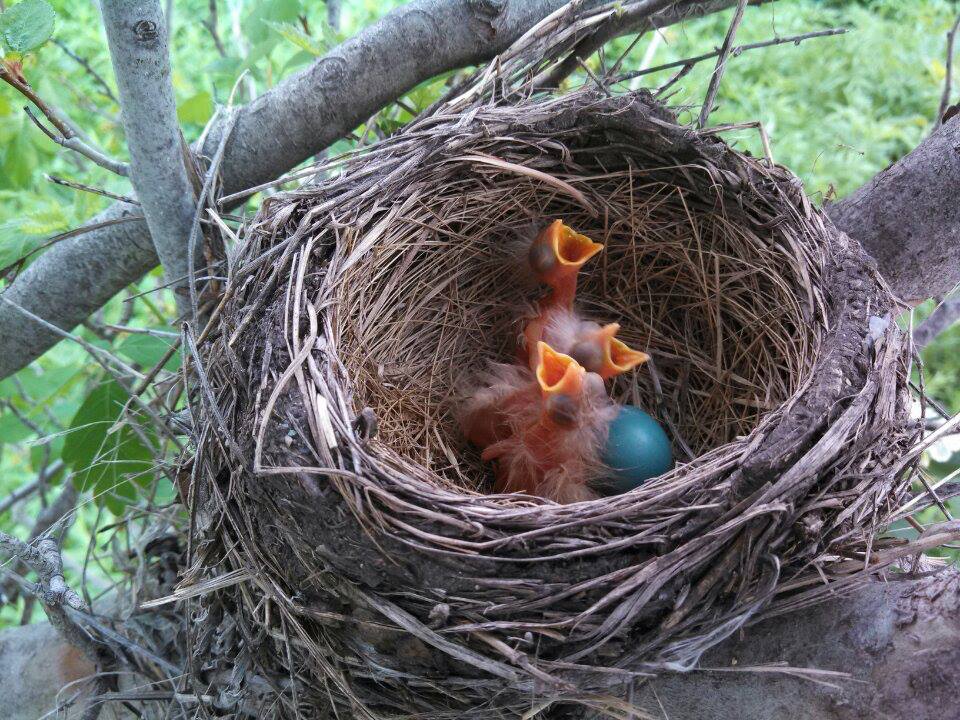
Animals and plants depend on each other. Trees, shrubs, wildflowers, and grasses provide food and protection for wildlife. In return, insects transfer pollen and birds and mammals spread seeds for plants. The bird watch area attracts wildlife native to the Great Plains and serves as a regional Outdoor Wildlife Learning Site (OWLS).
What do birds need?
Birds, like people, have three basic needs: food, water and shelter. The bird watch area includes elements that meet each of these needs.
Food: The bird watch area includes a variety of of native plants that produce seeds throughout the year have been planted. Can you find food for a bird?
Water: A flowing stream provides a reliable source of water for most of the year. Especially in winter, water is critical for bird survival. Can you find a water source?
Shelter: Trees, shrubs and perennials of various heights are attractive to wildlife. Birds seek protection in dense evergreens in winter, and shrub thickets help hide nests from predators during breeding season. Can you find a bird’s nest?
Make your yard a bird haven!
The need for suitable habitat for birds has never been more important. Your yard can be part of the solution by providing a sanctuary for birds. Just, identify the missing elements and include them in your overall design. Birds need a safe place to land. Why not in your yard? I am guessing that with a few enhancements you can turn your landscape into an oasis for local and migrant songbirds.
Food
Certainly, native plants are a preferred food choice of birds. Fruit-bearing trees and shrubs can support a wide variety of bird species. Include plants that hold their fruits through the winter like Viburnums, Junipers and Sumac. Choose deciduous trees such oaks, maples, hackberries, mulberries, crabapples, serviceberries and dogwoods along with shrubs that will provide berries (viburnums, elderberries, sumac, and chokeberry), seeds and nuts at different times throughout the year. Native wildflowers like coneflowers, black-eyed susan, little bluestem, sunflowers (use with caution, these can be aggressive), and asters provide nutritional seeds that birds love.
Shelter
Utilize trees, shrubs and perennials to simulate the natural layers of the wild. Birds seek out protection in dense evergreens in winter, while brush and impenetrable thickets keep nesting sites safe from predators. I like to leave a small brush pile and a few dead branches (unless they are dangerous to people or property) in our trees to provide insect food, nesting cavities, and shelter. Larger deciduous trees offer birds a higher vantage point for perching and resting. Ground-feeding birds sift through decaying leaves and even work through the outer layers of our compost pile.
Water
A water source for birds can be as simple as a bird bath or as elaborate as a small pond. Any water source is like a magnet for birds. The sound of water is irresistible. Keep the water clean and fresh to eliminate the possibility of algae and diseases by changing water every few days. In winter, water is even more critical for bird survival. Keep water open and unfrozen by installing a thermostatically controlled heating element in your water feature. If birds find your reliable pool of water, they will continually visit your yard and you will be rewarded for your efforts with a diverse collection of colorful visitors each day.
